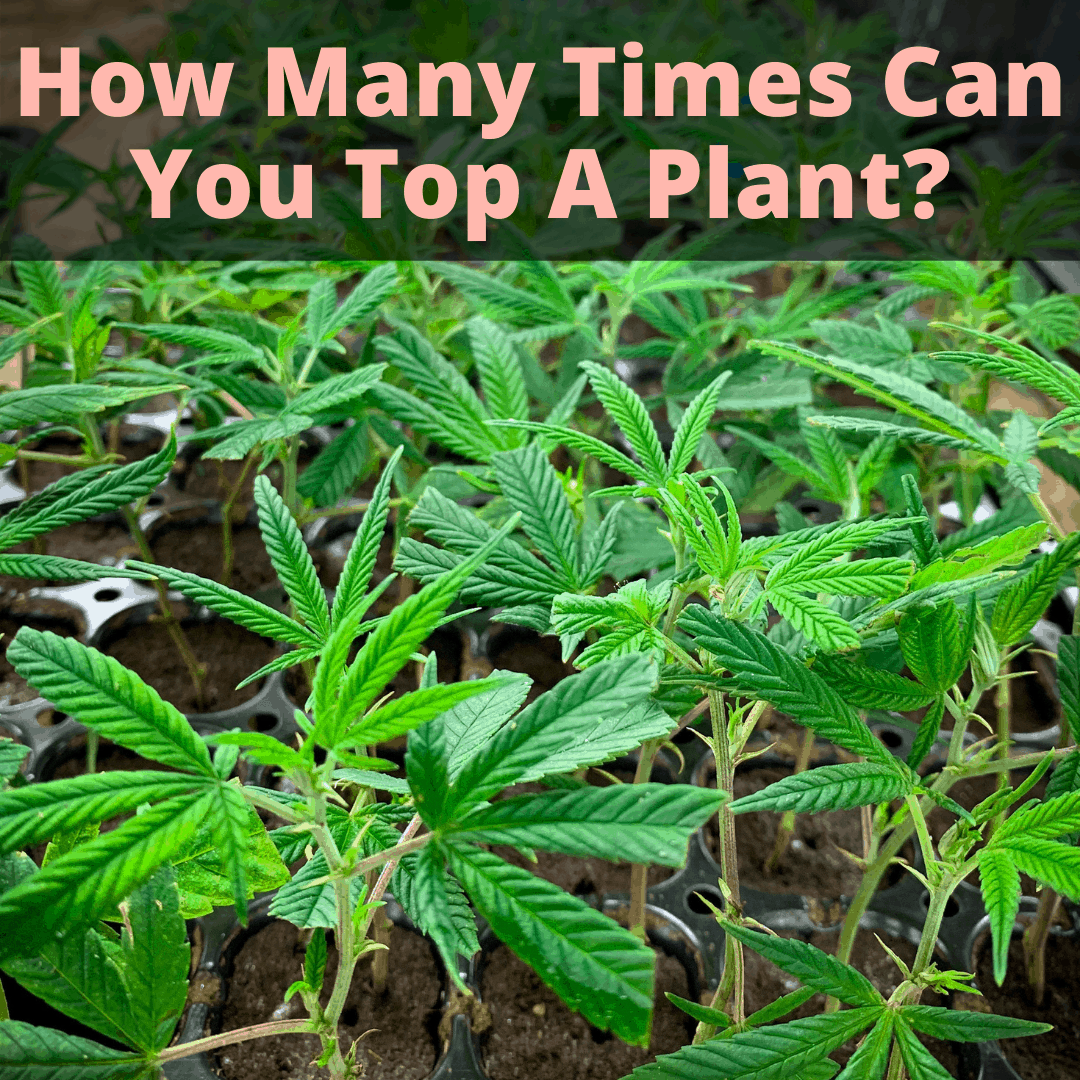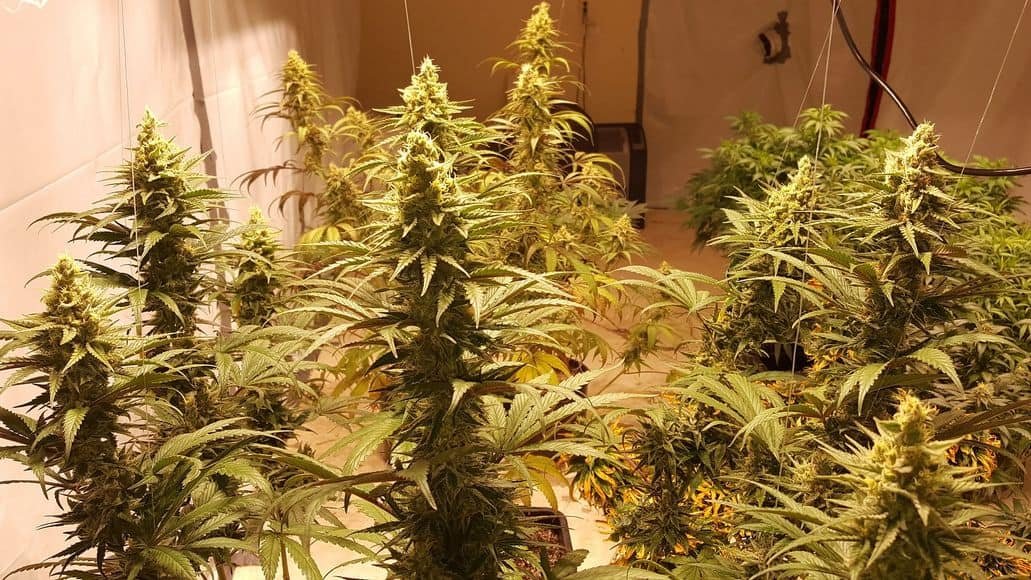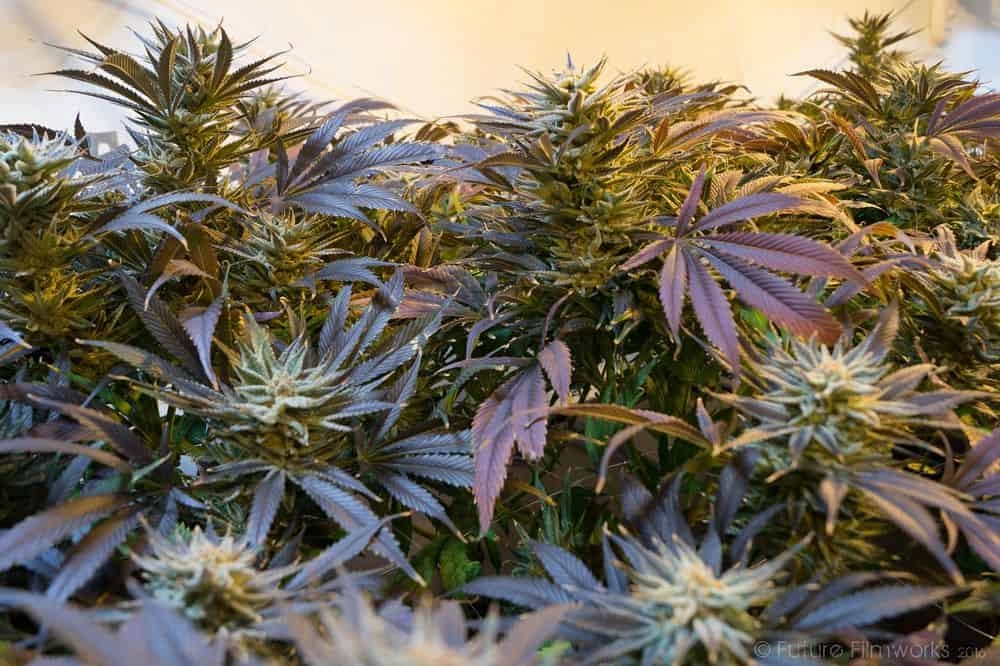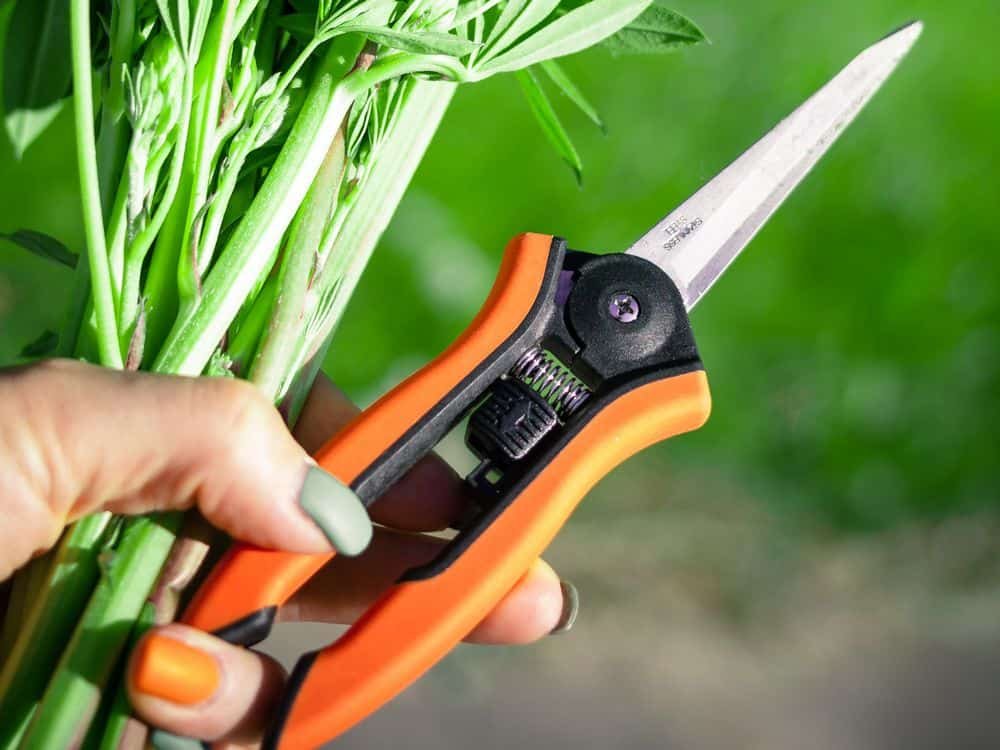
Then you’re almost certainly going to want to top your plant or plants.
In fact, you’re probably going to want to do it more than one.
But how many times can you top a marijuana plant? And what happens if you do it too many times?
We’ll answer those questions and also get into what topping is exactly, how it differs from fimming, and how and when to top your weed plants for the best results.
Contents
How Many Times Can You Top A Marijuana Plant?
You can top plants as many times as you want, but every time you do so, it takes 1 to 2 weeks to recover from the topping. This means your time to harvest is extended for every topping.
Topping increases the number of bud sites, but it also reduces the sizes of the buds and increases the grow time. You’ll need to find the right balance for your particular grow.
For that reason, we can’t simply give you an exact number of times you should be topping. But we can help you figure it out. Keep reading.
What Is Topping Exactly?
Before anything else, we should take a few sentences to explain what topping actually is. Basically, topping refers to the act off removing the main shoot of the cannabis plant.
Prior to topping, the plant uses all of its energy to growing the main shoot. Once the shoot is removed, no new one will ever grow from that spot, and the energy is diverted to the smaller side shoots.

As a result, the plant does not grow into a triangular shape like a Christmas tree, with just the single large shoot in the middle.
Instead it grows into an inverted triangular shape, with more bud sites at the top of the plant where they get exposed to more of the grow lights. Topping also results in the development of two new colas at the top where the plant was topped.
What Is The Difference Between Topping And Fimming?
Fimming is very similar to topping, but slightly different. When topping, you cut the shoot between the nodes. When fimming, you cut any new growth off at the top of the plant, not further down between the nodes.
The word ‘FIM’ is actually an acronym for ‘Fuck I Missed”. This stems from the fact that a fimmed plant looks like someone tried to top it, but did so incorrectly.
Fimming does not reduce vertical growth as much as topping, but it also does not take as long for the plant to recover. After fimming, the plant grows four colas at the cut site, instead of two with topping.
Overall, topping usually gives better results, since fimming is a bit of a hit or miss proposition. Sometimes it works well and sometimes it does not.
Advantages And Disadvantages Of Topping Weed Plants
The biggest advantage of topping was already mentioned above: instead of growing into a triangular shape, the plant grows into an inverted triangular shape.
This means a wide, flat top with many colas that are all exposed to the light. This provides a huge boost to yields when growing indoors, where the light source is stationary above the plants.
Another advantage is that the plant does not grow as tall. When growing indoors, you don’t generally have the vertical space for plants to grow to their natural height. Topping keeps their height in check.
The biggest disadvantage is that weed plants need time to recover from topping. This means a longer vegetative growth stage. The more often you top, the longer this stage takes.
Expect a 4-6 week minimum vegetative growth phase if you plan on applying these techniques. If you don’t give the plant plenty of additional time, you could end up with spindly growth and smaller buds.
Another problem is that having more colas (i.e. the inverted triangle shape) means the plant is top heavy. You’ll probably want some kind of support, either in the form of a screen, or stakes.
You could also have additional issues if you plan to switch flowering clones back to veg.
When To Top Your Cannabis Plants
Always top during vegging. Topping seedlings risks killing them or, at the very least, stunting their growth. Doing it during flowering will also damage your plants.
It is best to top your weed plants after they have grown 3 to 5 nodes. Once they have reached this size, they are strong enough to recover from the shock of being cut. If you want to top the new growth again, you should wait at least a week, perhaps 2, to give you plant time to recover from the previous topping.
How To Top
Any time you trim your plant in any way, including topping it, it is vital to use a sharp, sterile blade. Avoid using a regular pair of scissors, since they tend to crush the stem, instead if cutting it clean off.
Ideally, use a pair of weed trimming scissors like these. They are inexpensive, but they get the job done.
You could also simply use a razor blade, but trimming shears should be on any list of things you need to grow weed anyway. Whatever you use, make sure to sterilize it before cutting, either by using UV light or rubbing alcohol.
To top your plant, make a clean cut through the stem, just above the lateral branches. After being trimmed off, the main stem will no longer grow. Instead, the two side nodes will take over as colas.
After a week or two, the two new branches will have grown enough, that you can top each of them. Follow the same procedure. Now each of these branches will turn into two more colas. In this way, you can keep topping and keep increasing the number of colas, until you have the canopy where you want it.
Combine Lollipopping With Topping For Increased Yields
In addition to topping your plants, you should also trim off growth beneath the canopy. These areas will not get much, if any, light, if you have built a dense canopy full of colas.
Leaving growth just means the plant is wasting energy on areas that will never produce substantial buds.
We recommend lollipopping your weed plants. This means trimming off ALL growth on the bottom portions, where it doesn’t get enough light to produce buds anyway.
This allows the plant to divert all of its energy to the canopy to produce the largest buds possible. This type of pruning is a great way to boost yields.
How Many Times To Top Marijuana Plants: Final Thoughts
You can top your cannabis plants as often as you like, but it will increase the time they need to spend vegging. We recommend topping to keep height in check and also to produce a flat canopy with more colas. Ideally, you want to fill the entire grow area with as many colas as possible. That way, your plants will produce the largest amount of weed possible.


As I understand if you do not need to top., do not
To each, their own.
I have graduated from a beginner or intermediate level grower.
I recently got over a quarter pound per plant 🌵 of Lemon 🍋🦨 Sour Diesel ⛽. I got this bigger than average yield by topping several times, maybe too many times because the branches get smaller and smaller, so you need to find a good balance ⚖️♎⚖️ and top. The extra toppings also drove me crazy waiting to harvest because I had too many bud sites and they overcrowded my tent 🎪, but a great learning experience.
I learned to top several times but pay close attention to the growth patterns and make sure you don’t crowd your grow 🪴😱🤔 tent ⛺ because with each topping and doubling buds, you must be cognizant that each new bud adds a new stem which, in turn, quadruples the foliage and makes it a huge hassle constantly trimming nearly every time I open my tent ⛺.
Waaahhhhhh….” I had too many colas…….lol
You’re a dick…lol
. No if you want more harvest in a smaller area always top. I recommend topping when you have 4 knobs. Then top again when the 2 new colas have 4 this will give you 4 new colas. When each of the new colas have 4 knobs top then 1 more time you should now have 8 colas instead of 1. If you have been low stress training the limbs. Now looking down from above your plant you should have a wide flate short plant with plenty of room between each cola to grow straight up. If you still have lots of room in your grow room you can continue and top again giving you 16 colas full of buds. Remember every time you top your plant will spread out wider. The first cut should double the size. You can take a plant that if left alone would grow 3 foot wide by 10 foot high and make it fill a 10 foot by 10 foot grow room around 4 to 5 foot high.
Best advice
That’s the best breakdown of that advice I’ve come across. Thank you! You made it so simple
Thanks
Knowledge is power. And in the case of weed, U U want the right info to get the job done. Top those plants. Peace
Is it possible for me to top a photo plant giving me 2 colas then top to get 4 colas then top to get 8 colas then again to get 16 colas all.the way till I have almost reached the width I want then for the last cut could I not top it but cut it the fimming way cutting only the tips instead of the stem. Would fimming at the end cause it to try and grow out 64 colas instead of 32?
I know I’m going to be topping my second grow. I only topped 2 times on my first grow and it worked giving me 4 main colas with extras growing off each of them. I may have to try the fimming deal. Could I top 2 times then fimming once then go back to topping
I have seen alot of grows were topping was done and you can clearly see were the two new colas started growing but I have not seen a picture of one that was cut fimming causing 4 new colas to grow. Heck I could fill my 4x4x80 tent with 1 photo plant. In Virginia we can legally only grow 4 plants at a time so production counts alot here
I like your train of thought lol. This time last year I started an indoor grow with just two plants and harvested it in early May. I did pretty much as you described and the canopy covered my 10×5 and I was five pounds heavier in the end
What you’re describing is known as mainlining. There’s a bit more to it, but check it out. It’s a cool process. ✌️
Welcome to Virginia. I hope they will increase the number of plants. Only way that 4 plants work here well is by doing it this way for indoor. Guess the very best way to do it would be if u can grow 4 outdoor plants. Avoiding bugs and mold. Plus prying eyes. This seems pretty difficult here.
Ya, you definitely should top your plants ,it will give you a much better yield !
Can you top them and fim
I like topping over filming because typing produces strong branches, as to filming causes alot of weak branches, I uses a trellis net to help hold the wieght up after topping 2 times. I don’t have alot of room to top more then twice. I am thankful for the room I do have. But yea people topping to get that flat full canopy is the way to go, doubling, or tripling your yield. God put it on earth for a reason, and I’m going to use it, for such reasons…peace……. happy growing!!!
Topping can also produce negative effects in some hybrid strains. I’ve seen plants hermy (gelato, meat breath) if topped more than once. Others seem to have smaller growth (leaf, bud) in bloom (death bubba). While it may seem to produce more tops, it’s the weight that tells the truth. So know your strain!
Something to keep in mind, I’ve seen really good results with LST that I practice in my garden. While these techniques are not practical in a commercial environment, you can produce a lot of primary kolas!
JD
You can keep a plant in veg stage forever on 18 hours of light and 6 hours of darkness it’s up to you when you want to put it in 12 hours of darkness and 12 hours of light to flower. This will give you plenty of time to top your plant once it reaches the six node top it at the 5th node this will turn into 2 node’s wait until the two new nodes grow out and top again they will turn into 4 nodes wait 3 day’s go down to the second branches from the top and then top both sides then go down to the third branches down and top both sides so now your whole plant will be topped from the 3rd set 4th set and 5th set up everything from the third down get rid of it all. By this time the top has healed repeat everything over and over giving it 4 day’s to heal from each topping that you top. As your new leaves start growing out get rid of all the old big fan leaves because you’ll have new ones coming no sense in having the old one’s blocking out the light just don’t cut the new ones coming out that’s going to your colas. So your not just topping the tops your topping the sides and all around the whole plant by doing this will add weight to your plants and thats good because the more weight the thicker and stronger your plants will be don’t hold it up with anything let it get strong on it’s own a fan blowing on your plants won’t make them thicker or stronger the more bud site’s and topping and adding to it is what makes it stronger. As you top and your plants get bigger train them with your hand in the early stages by slowly bending each cola away from one another starting at the top and working your way down this will train them to grow away from each other. Be careful when watering when you water bottom water your plants for 30 minute’s this will build up a strong root system only top water once a month to wash the salt’s and built up minerals out and once a week water with Perrier carbonated mineral water it’s fizzy and all natural this will boost your plants and give you healthier and greener plants they will be happy. I got off subject here but I hope some of this information can help someone. Wait until your plants are about 4 ft high and healthy and full with a month or two with no more topping after your plants are fully healed and 4ft tall flip them over to 12 and 12 and at this time is when you feed them big bud’& Bloom 2-8-4 happy growing and may your buds grow like magic and may you dance on the Moon and see thing’s never seen before.🌱🦖
Excellent reply, full of great information!
Thank you
Thanks
Good information for all .
Thankya Mr ,Alien Joe, ReeferRod is on it!!!
You said you would mention what happens if you do it too many times but you didn’t.
Yes more topping equals more veg time. That doesn’t answer the question though.
Is it even possible to Top too many times?
Thank you for all of the valuable grow and topping information! Very helpful.